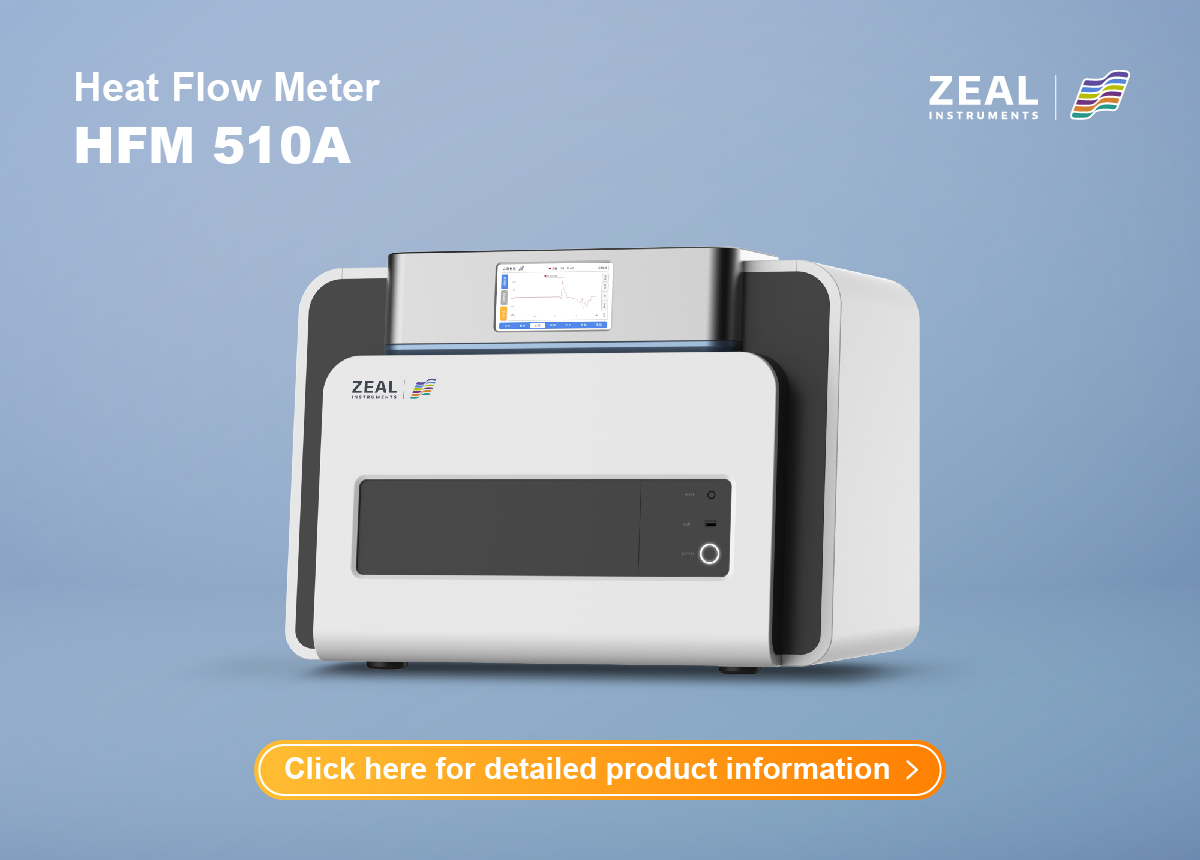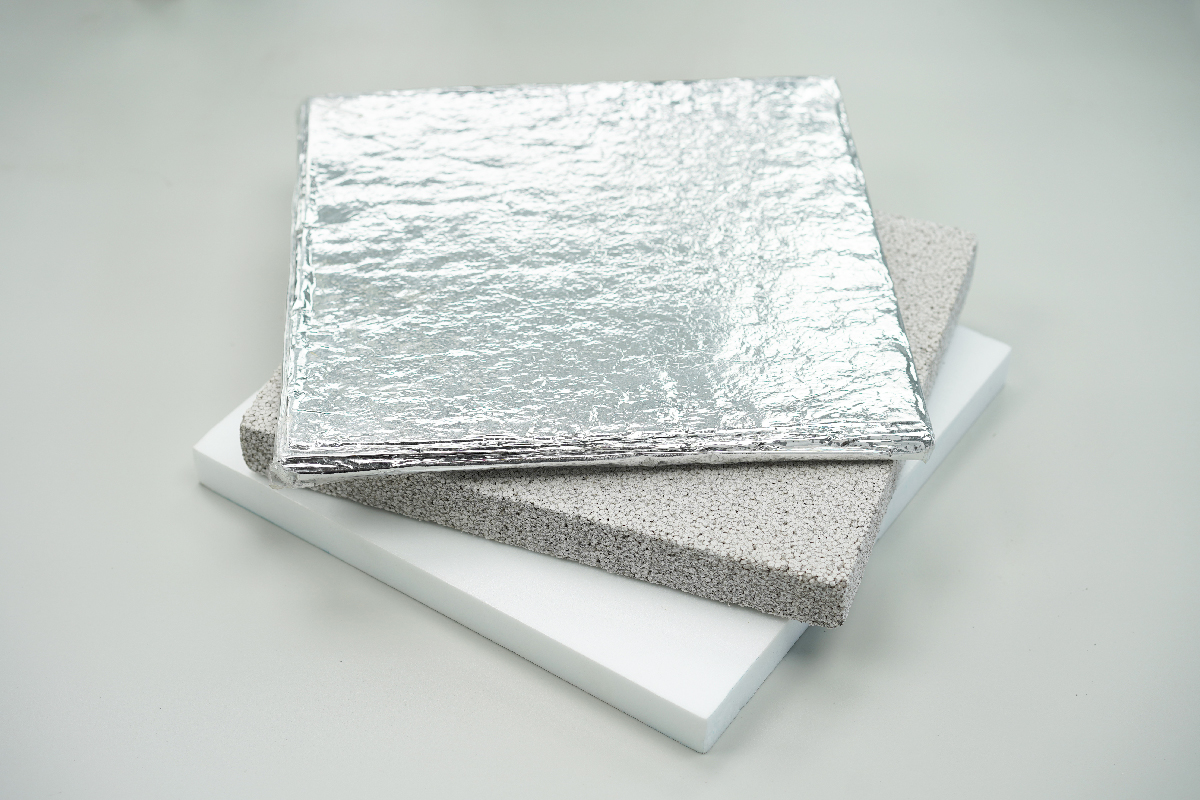Heat Flow Meter Thermal Conductivity: Measuring Heat Transfer in Materials
If you are interested in understanding how well a material can conduct heat, you might want to learn more about the Heat Flow Meter Thermal Conductivity technique. This method is widely used to measure the thermal resistance and thermal conductivity of various materials, including insulation products, construction materials, packaging, and assemblies.
The Heat Flow Meter Thermal Conductivity technique works by measuring the rate of heat flow through a sample of the material. The sample is placed between a temperature-controlled heating plate or cooling plate and a heat flow meter. The temperature difference between the two plates is fixed, and the heat flow meter measures the rate of heat flow through the sample. The area of the sample is used to calculate the thermal conductivity of the material.
This method is highly accurate and can provide valuable insights into the thermal performance of a material. It is particularly useful for industries such as construction, packaging, and electronics, where thermal conductivity is a critical factor. By using the Heat Flow Meter Thermal Conductivity technique, you can gain a better understanding of how well a material can conduct heat and make informed decisions about its suitability for a particular application.
Principles of Heat Flow Measurement
If you want to determine the thermal conductivity of a material, you can use the Heat Flow Meter (HFM) method. This method involves placing a material sample of known thickness between a heated and a cooled plate. The temperature difference is fixed, and the rate of heat flow through the test sample is determined by means of a heat flow meter [1].
The heat flow meter is a plate-shaped measuring device located between the sample and the temperature plates. The HFM method is a steady-state test, in which heat is passed in a uniaxial path through a slab of material. The temperature of the material is measured at two points, and the rate of heat flow is calculated from the temperature difference and the thermal resistance of the material [2].
The thermal conductivity of a material is defined as the quantity of heat that flows through a unit area of the material in a unit time when there is a unit temperature gradient in the direction perpendicular to the area [3]. It is a measure of how well a material conducts heat, and it is an important property for many engineering applications.
The HFM method is a comparative method and thus has some uncertainties. However, it delivers accurate values for the thermal conductivity much faster than other methods such as the Guarded Hot Plate (GHP) method [2].
In summary, the HFM method is a useful method for determining the thermal conductivity of a material. It involves placing a material sample of known thickness between a heated and a cooled plate and measuring the rate of heat flow through the sample. The HFM method is a steady-state test and is faster than other methods such as the GHP method.
Heat Flow Meter Design
The Heat Flow Meter (HFM) is a device used to measure the thermal conductivity of materials. It consists of two parallel plates, one of which is heated and the other is cooled. A material sample is placed between the plates, and the heat flow through the sample is measured. The HFM is designed to be accurate, reliable, and easy to use.
Sensor Technology
The HFM uses a heat flux sensor to measure the heat flow through the material sample. The sensor consists of two thin films of different metals, which are bonded together. The top film is heated by the hot plate, while the bottom film is cooled by the cold plate. The heat flow through the sensor generates a small voltage, which is measured by the HFM electronics. The voltage is proportional to the heat flow, and thus to the thermal conductivity of the material sample.
Calibration Methods
The accuracy of the HFM depends on the calibration of the heat flux sensor. There are two main calibration methods: the electrical calibration method and the comparative method.
The electrical calibration method involves measuring the voltage generated by the heat flux sensor when a known heat flux is applied. This method is accurate but requires specialized equipment and is time-consuming.
The comparative method involves measuring the heat flow through a reference material of known thermal conductivity, and then measuring the heat flow through the material sample. The thermal conductivity of the material sample is then calculated from the ratio of the two heat flows. This method is simpler and faster than the electrical calibration method, but it is less accurate.
In conclusion, the Heat Flow Meter is a reliable and accurate device for measuring the thermal conductivity of materials. It uses a heat flux sensor to measure the heat flow through a material sample, and it can be calibrated using either the electrical calibration method or the comparative method.
Thermal Conductivity Testing
Thermal conductivity testing is used to determine the ability of a material to conduct heat. The Heat Flow Meter method is a common technique used to measure the thermal conductivity of a material. This method involves sandwiching a thin sample of the material between two plates of known thermal conductivity and measuring the rate of heat flow through the sample.
Sample Preparation
Before conducting thermal conductivity testing, the sample must be prepared. The sample should be cut into a thin, uniform shape to ensure accurate results. The thickness of the sample should be less than 1 cm to minimize the effects of edge heat loss. The sample should also be free of any air gaps or voids that could affect the thermal conductivity measurement.
Test Procedure
The Heat Flow Meter method involves sandwiching the sample between two plates of known thermal conductivity, typically made of copper. The plates are heated or cooled to a constant temperature difference, and the rate of heat flow through the sample is measured. The thermal conductivity of the sample is then calculated using the following formula:
k = Q / (A * ΔT)
Where:
- k is the thermal conductivity of the sample
- Q is the rate of heat flow through the sample
- A is the area of the sample
- ΔT is the temperature difference across the sample
The Heat Flow Meter method provides accurate and reliable results for measuring the thermal conductivity of a wide range of materials. It is commonly used in the fields of materials science, engineering, and physics to characterize the thermal properties of materials.
Data Analysis and Interpretation
Once you have collected the data using the Heat Flow Meter method, you will need to analyze and interpret it. The primary goal of the analysis is to determine the thermal conductivity of the material being tested.
One common way to analyze the data is to plot the heat flow rate as a function of the temperature difference across the sample. This plot is known as the heat flow curve, and it can provide valuable information about the thermal conductivity of the material.
Another way to analyze the data is to calculate the thermal conductivity directly from the heat flow rate and the sample geometry. This calculation is straightforward for a homogeneous sample, but it can be more complicated for a heterogeneous sample.
It is important to note that the Heat Flow Meter method is a comparative method, which means that the accuracy of the results depends on the accuracy of the reference material. Therefore, it is crucial to choose a suitable reference material with a known and accurate thermal conductivity.
In addition to determining the thermal conductivity of the material, the Heat Flow Meter method can also provide information about other thermal properties, such as the thermal transmittance (U-value) and the thermal resistance. These properties can be useful for designing and optimizing thermal insulation systems.
Overall, the Heat Flow Meter method is a reliable and accurate way to determine the thermal conductivity of a material. By carefully analyzing and interpreting the data, you can gain valuable insights into the thermal properties of the material and use this information to optimize its performance in various applications.
Applications of Heat Flow Meters
Heat flow meters are used to measure the thermal conductivity of various materials. They are widely used in industries where the accurate measurement of thermal conductivity is essential. Here are some of the applications of heat flow meters:
Building Materials
Heat flow meters are commonly used to measure the thermal conductivity of building materials such as insulation, bricks, and concrete. By measuring the thermal conductivity, builders can ensure that their buildings are well-insulated and energy-efficient. Heat flow meters can also be used to test the effectiveness of different insulation materials.
Textiles and Insulation
Heat flow meters are also used to measure the thermal conductivity of textiles and insulation materials. This is particularly important in the textile industry, where manufacturers need to ensure that their products are warm enough to keep people comfortable in cold weather. By measuring the thermal conductivity of insulation materials, manufacturers can also ensure that their products are effective at keeping buildings warm.
Heat flow meters are essential tools for measuring the thermal conductivity of various materials. They are commonly used in industries such as construction, textiles, and insulation manufacturing. By measuring the thermal conductivity of different materials, industries can ensure that their products are effective and energy-efficient.
Standards and Compliance
When it comes to measuring thermal conductivity using the Heat Flow Meter method, there are several international standards that have been established to ensure accuracy and consistency across different testing facilities. These standards include:
- ASTM C518: Standard Test Method for Steady-State Thermal Transmission Properties by Means of the Heat Flow Meter Apparatus. This standard covers the measurement of thermal conductivity, thermal resistance, and thermal transmittance of materials using a heat flow meter apparatus.
- ISO 8301: Thermal insulation – Determination of steady-state thermal resistance and related properties – Heat flow meter apparatus. This standard specifies a method for determining the steady-state thermal resistance, thermal conductivity, and thermal transmittance of thermal insulation materials using a heat flow meter apparatus.
- DIN EN 12667: Thermal performance of building materials and products – Determination of thermal resistance by means of guarded hot plate and heat flow meter methods – Products of high and medium thermal resistance. This standard covers the measurement of thermal resistance, thermal conductivity, and thermal transmittance of building materials and products using a heat flow meter apparatus.
To comply with these standards, testing facilities must ensure that their equipment is calibrated properly, their testing procedures are consistent, and their personnel are properly trained. Compliance with these standards ensures that test results are accurate, repeatable, and comparable across different testing facilities.
It’s important to note that compliance with these standards is not mandatory, but it is highly recommended. Non-compliance can result in inaccurate test results, which can have serious consequences in industries such as construction, where the thermal performance of building materials is critical to the safety and comfort of building occupants.
In addition to these international standards, there may be local or industry-specific regulations that testing facilities must comply with. It’s important to check with your local regulatory agencies or industry associations to ensure that you are in compliance with all relevant regulations and standards.

































